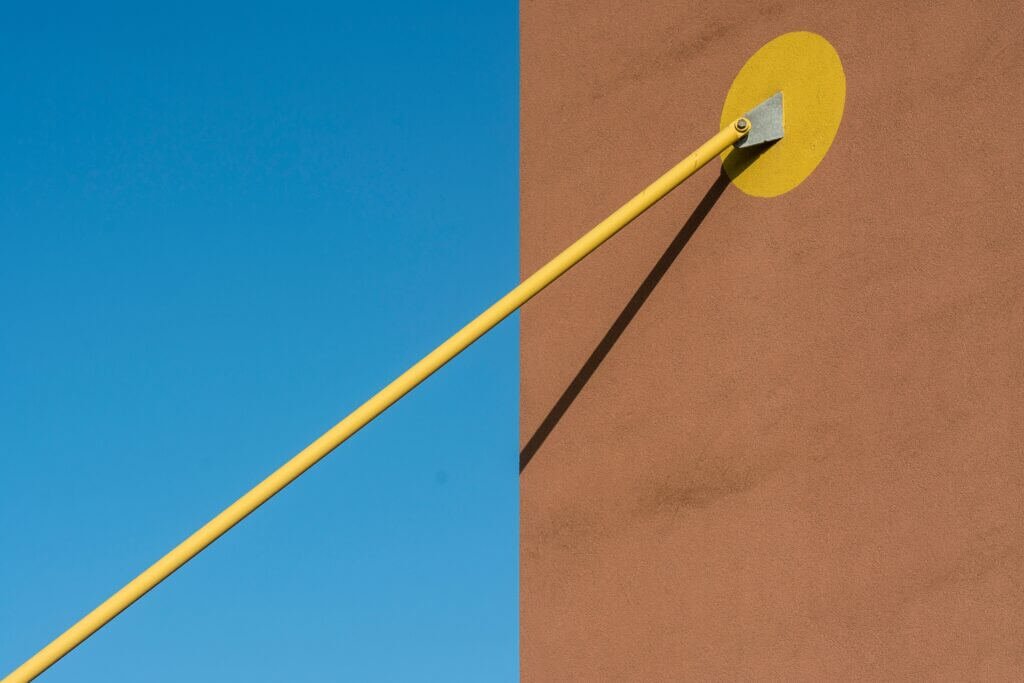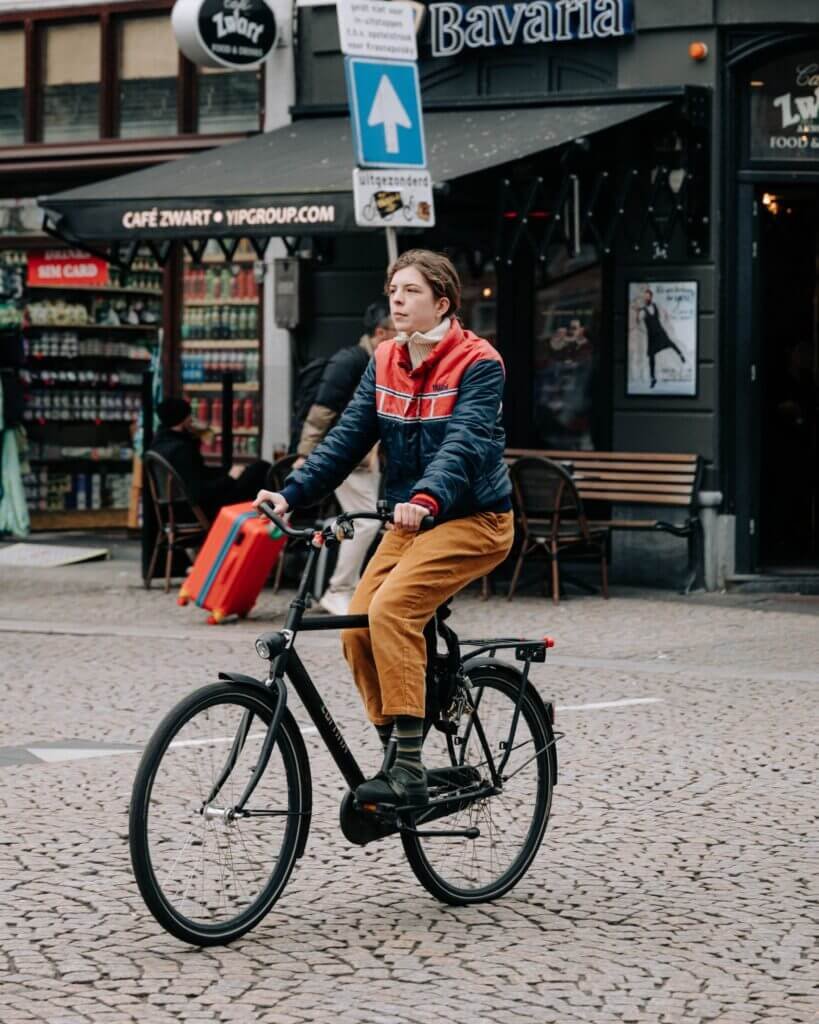Living in a city apartment definitely has its perks, but it also presents certain challenges when it comes to pursuing your green thumb. Limited space, lack of natural light, and restrictions on outdoor areas can make gardening seem like a daunting task. However, fear not! In this article, we will explore the challenges of gardening in a city apartment and provide practical tips and ideas to help you create a thriving urban oasis right within your four walls. So, whether you’re an experienced gardener or just starting out, get ready to embark on an exciting journey of urban gardening that will bring life, beauty, and nature into your urban dwelling.

Limited Space
Small balconies or windowsills
Living in a city apartment often means having limited outdoor space, if any at all. Small balconies or windowsills are common features in apartment living, and they can pose a challenge when it comes to gardening. With such limited space, it becomes a task to find suitable areas for plants to thrive. However, don’t let the lack of space discourage you! There are plenty of creative solutions to maximize the available space and create a vibrant green oasis in your tiny balcony or windowsill.
Lack of outdoor area for large plants
Large plants, such as trees or shrubs, require ample outdoor space for their roots to grow and spread. Unfortunately, city apartments often lack the necessary outdoor area to accommodate such plants. However, this doesn’t mean you have to give up on the idea of having big, impressive greenery. There are many compact and dwarf varieties of plants available that can thrive in smaller spaces. These plants are specifically bred to grow within confined areas, making them a great option for city dwellers who still want to enjoy the beauty of larger plants.
Limited space for gardening tools and equipment
Another challenge of gardening in a city apartment is the limited storage space for gardening tools and equipment. Not only do you need space for your plants, but you also need a designated area to store your gardening essentials. However, with a little creativity and organization, you can make the most of the available space. Consider investing in compact and foldable tools that can easily be stored in a small cabinet or even hung on the wall. Additionally, utilizing vertical space by installing shelves or hooks can help maximize storage options for your gardening gear.
Sunlight Availability
Shaded areas in the apartment
One common challenge faced by urban apartment dwellers is the presence of shaded areas within their living spaces. Buildings, surrounding structures, or even the layout of the apartment itself can create areas that receive limited or no direct sunlight. This lack of sunlight can be detrimental to plant growth, as sunlight is essential for photosynthesis. However, there are several options to address this challenge. Consider choosing plants that can tolerate low-light conditions, such as snake plants or pothos. These plants are known for their ability to thrive in shade and can add life to those dimly lit corners of your apartment.
Buildings blocking natural sunlight
Tall buildings and neighboring structures can create challenges when it comes to receiving natural sunlight in your apartment. The lack of direct sunlight can make it difficult for plants to thrive as they may not receive the necessary energy for growth and development. In such cases, it’s important to strategically place your plants in areas that receive the most sunlight throughout the day. Consider choosing plant varieties that are more tolerant of partial shade or indirect sunlight. This way, even with limited natural sunlight, you can still enjoy a thriving indoor garden.
No direct sunlight for plants
Some city apartments face the challenge of not having any direct sunlight at all. This can be due to various factors such as the orientation of the apartment, surrounding buildings, or even being located on lower floors. Without direct sunlight, it can be challenging for plants to survive. However, with the advancements in technology, you can utilize artificial lighting to provide the necessary light for your plants. LED grow lights are an excellent alternative for supplementing natural sunlight and can be adjusted to ensure your plants receive the appropriate spectrum and intensity of light they need to thrive.

Temperature Control
Limited control over indoor temperature
In a city apartment, you may have limited control over the indoor temperature. Depending on the building’s heating and cooling systems, the temperature inside your living space may fluctuate, making it challenging to provide a stable environment for your plants. Extreme temperatures, whether hot or cold, can negatively impact plant growth and increase the chances of plant stress or even death. However, there are a few strategies you can employ to help mitigate these challenges. Consider using temperature-regulating devices such as thermostats, heaters, or fans to help maintain a more consistent temperature for your plants.
Extreme temperatures affecting plant growth
City apartment living can also subject plants to extreme temperature fluctuations. During summer, some apartments can become unbearably hot, while in winter, they may become too cold. Both can have adverse effects on plant health and growth. To combat this, it’s crucial to understand the temperature requirements of your plants. Selecting plant species that are well-suited to the climate conditions of your city can greatly increase the chances of successful plant growth. Additionally, providing insulation or using protective coverings during extreme weather can help create a more stable environment for your plants.
Inconsistent temperature fluctuations
Inconsistent temperature fluctuations can be challenging for plants as they thrive in more stable environments. City apartments, especially those situated in high-rise buildings, can be subject to temperature changes caused by factors like air conditioning systems, drafts, or even opening and closing doors frequently. To address this challenge, you can group your plants together to create a microclimate that helps regulate temperature and humidity levels. This technique, known as plant clustering, allows plants to protect each other and provides some insulation against abrupt temperature fluctuations.
Soil and Water Management
Lack of access to suitable soil
One of the challenges of city apartment gardening is the lack of access to suitable soil. City soil is often not suitable for plant growth due to factors such as pollution and contamination. Additionally, apartment dwellers may not have access to open space where they can gather natural soil for their gardening needs. However, this challenge can be overcome by using alternative soil options such as commercial potting mixes or soilless growing mediums like coco coir or peat moss. These options provide a clean and nutrient-rich environment for your plants to thrive, regardless of the limitations of traditional garden soil.
Limited water source or restrictions
City apartments may have limited access to water sources or face water usage restrictions. This can make watering your plants a challenge, as plants require an adequate and consistent water supply for healthy growth. However, there are several strategies you can employ to overcome this challenge. Consider collecting and storing rainwater for watering your plants. Install a water-efficient irrigation system, such as a drip irrigation system, to ensure that water usage is minimized while still providing enough moisture for your plants. Additionally, choosing plants that are more drought-tolerant can help alleviate some of the water-related challenges faced by city gardeners.
Difficulties in proper drainage
Proper drainage is essential for plant health, as it helps prevent waterlogging and root rot. However, city apartments may not have the necessary provisions for proper drainage, such as outdoor garden beds or sufficient drainage holes in pots. To address this challenge, it’s important to select pots or containers with adequate drainage holes. Additionally, consider using materials such as gravel or pebbles at the bottom of your pots to improve drainage. Regularly monitoring the moisture levels of your plants’ soil and adjusting watering practices accordingly can also help prevent overwatering and ensure proper drainage for your plants.

Pest and Disease Control
Higher risk of pest infestations in urban areas
Urban areas often have a higher risk of pest infestations due to factors such as close proximity to other buildings, presence of garbage, or high population density. Pests like aphids, spider mites, or whiteflies can wreak havoc on your indoor garden if not addressed promptly. To tackle this challenge, it’s important to prioritize preventive measures such as regularly inspecting your plants for signs of pests, practicing good hygiene by removing dead leaves or debris, and providing adequate airflow to discourage pest infestation. Additionally, implementing organic pest control methods like neem oil or insecticidal soap can help keep your apartment garden pest-free.
Limited natural predators for pests
In a city apartment, the absence of natural predators for pests can make it challenging to control pest populations organically. Unlike outdoor gardens that benefit from the presence of beneficial insects like ladybugs or praying mantises, indoor gardens lack this natural pest control. However, there are strategies you can employ to combat this challenge. You can introduce natural predators indoors, such as ladybugs or predatory mites, to help keep pest populations in check. Alternatively, you can use physical barriers like insect netting or sticky traps to prevent pests from spreading or causing damage to your plants.
Limited options for organic pest control
Gardening in a city apartment may also come with limited options for organic pest control. Due to restrictions or regulations, certain organic pest control methods may not be viable or easily accessible. In such cases, it’s important to research alternative organic pest control methods that are suitable for apartment gardening. For example, making your own pest control solutions using ingredients like garlic, vinegar, or soap can be a cost-effective and natural way to combat pests. Additionally, seeking advice from local garden centers or joining online gardening communities can provide valuable insights into organic pest control methods that are specific to your city.
Noise and Pollution
Noise pollution affecting plant growth
Living in a city apartment often means being exposed to constant noise levels. Unfortunately, excessive noise can have a negative impact on plant growth. Studies have shown that continuous exposure to noise can lead to increased stress levels in plants and hinder their growth and development. To minimize the effects of noise pollution, you can strategically place noise-absorbing materials such as curtains, carpets, or acoustic panels near your plants. This can help create a more serene environment for your plants and reduce the detrimental effects of noise pollution.
Air pollution impacting plant health
Air pollution is another challenge faced by city apartment gardeners. The presence of pollutants such as car emissions, industrial fumes, and dust can have adverse effects on plant health. Airborne pollutants can clog leaf pores and hinder photosynthesis, leading to stunted growth and reduced vigor in plants. To combat this challenge, you can choose plants that are more tolerant of air pollution, such as ferns or peace lilies, as they have natural air-purifying properties. Additionally, regularly wiping the leaves of your plants with a damp cloth can help remove dust and contaminants, allowing them to breathe easier.
Chemical pollutants from nearby sources
Living in close proximity to various sources of chemical pollutants, such as factories, construction sites, or busy roads, can also pose challenges for apartment gardeners. Chemical pollutants can infiltrate the air and settle on the leaves and soil of your plants, potentially causing damage or inhibiting growth. To mitigate this challenge, consider placing your plants in areas that are further away from potential sources of chemical pollutants. Additionally, growing plants that have a higher tolerance for pollutants, such as succulents or spider plants, can help minimize the negative effects of chemical pollutants on your indoor garden.
Time and Maintenance
Balancing gardening with busy urban lifestyle
One of the main challenges of gardening in a city apartment is the need to balance gardening activities with a busy urban lifestyle. The fast-paced nature of city living often leaves little time for gardening maintenance and care. However, with proper planning and time management, you can still enjoy the benefits of gardening. Consider choosing low-maintenance plants that require minimal attention and are more forgiving if you miss a watering or pruning session. Additionally, incorporating gardening tasks into your daily routine, such as watering plants in the morning or evening, can help ensure that your plants receive the care they need without overwhelming your schedule.
Limited time for regular maintenance
Regular maintenance is crucial for the health and well-being of your indoor garden, but with limited time, it can be a challenge to keep up with the necessary tasks. To overcome this challenge, focus on creating a realistic maintenance routine that suits your lifestyle. Break down tasks into smaller, manageable chunks and allocate specific times for each task. This way, you can easily incorporate regular maintenance into your daily or weekly schedule. Additionally, consider investing in self-watering systems or automated timers to ensure that your plants receive the necessary water even if you’re unable to attend to them regularly.
Difficulties in finding help for plant care
In a city apartment, finding someone to help care for your plants while you’re away can be a challenge. Unlike traditional gardens where neighbors or friends can easily help with watering or maintenance, apartment gardens may require a more structured arrangement. If you’re unable to find someone willing to help with plant care, consider using watering globes or self-watering planters that can provide hydration to your plants for extended periods. Alternatively, you can join local gardening communities or online forums where you can find like-minded individuals who can offer assistance or advice on plant care during your absence.
Neighborhood Restrictions
Apartment rules regarding gardening
One of the challenges of gardening in a city apartment is the presence of apartment rules and regulations that restrict or regulate gardening activities. Some apartments may have strict guidelines on what types of plants can be grown, where they can be placed, or how they should be maintained. It’s important to familiarize yourself with these rules before starting your indoor garden. However, if such restrictions are in place, try to work within the guidelines by choosing plants that are permitted and finding creative solutions to maintain a beautiful indoor garden that adheres to the apartment’s rules.
Restrictions on hanging plants outdoors
Hanging plants can add a touch of beauty and greenery to any apartment, but some buildings or apartments may have restrictions on hanging plants or attaching hooks to outdoor areas. This can significantly limit your options for displaying plants and may require you to think outside the box. Consider utilizing vertical space by installing wall-mounted planters or shelving units indoors to create an indoor garden that still provides the beauty and benefits of hanging plants without violating any restrictions.
Prohibited use of certain gardening techniques
Certain gardening techniques, such as hydroponics or aquaponics, may be prohibited in city apartments due to safety concerns or potential water damage. While these techniques can be innovative and space-saving, it’s important to respect the rules and regulations set by your apartment. Instead, focus on exploring other gardening methods that are permitted, such as container gardening or vermicomposting. These techniques can still provide a rewarding gardening experience within the limitations of your urban apartment.
Plants and Species Selection
Limited choices for suitable plants
The limited space, sunlight availability, and environmental conditions of city apartments can impact the choices of suitable plants for indoor gardening. Some plants may not thrive in these conditions and may require specific care or conditions that cannot be met within an apartment setting. However, don’t be discouraged! There is still a wide variety of plants that can successfully grow in city apartments. Consider selecting plants known for their adaptability and resilience, such as pothos, spider plants, or succulents. These plants require minimal care and can thrive in a range of indoor conditions, making them ideal choices for urban apartment gardening.
Difficulty in growing certain species
Certain plant species may be more challenging to grow in city apartments due to their specific requirements. Plants that require high humidity, a long growing season, or specialized care may not be suited for the indoor environment of an apartment. However, this doesn’t mean you can’t enjoy these plants altogether. You can create microclimates within your apartment to cater to the needs of these plants. For example, grouping humidity-loving plants together or using humidifiers can help create a more suitable environment. Additionally, investing in a grow tent or specialized equipment can allow you to grow plants that require more specific conditions.
Adapting plants to indoor environments
Although plants naturally thrive in outdoor environments, they can still adapt to indoor settings with the right care and environment. Adapting plants to indoor environments is a challenge that city apartment gardeners often face. One of the key factors in helping plants adapt is understanding their natural habitat and replicating those conditions as closely as possible indoors. Providing adequate lighting, controlling temperature and humidity levels, and creating optimal airflow can all contribute to a successful adaptation of plants to an indoor environment. Researching the specific needs of each plant species and making necessary adjustments can help ensure that your indoor garden flourishes in the unique setting of a city apartment.
Lack of Experience and Knowledge
Inexperienced in urban gardening techniques
Gardening in a city apartment requires a different set of skills and knowledge compared to traditional gardening. The unique challenges and limitations of apartment gardening may require you to learn and apply specific techniques that are suited to urban environments. If you’re inexperienced in urban gardening techniques, it’s important to approach your indoor garden with an open mind and a willingness to learn. By seeking information from reputable sources, attending workshops or gardening classes, or joining online gardening communities, you can gain valuable insights and advice from experienced urban gardeners.
Limited understanding of plant care
Having limited understanding of plant care can pose challenges when it comes to maintaining a thriving indoor garden. Different plants have different care requirements, and not knowing how to meet these needs can result in poor plant health or even plant mortality. To overcome this challenge, take the time to research and familiarize yourself with the care requirements of the plants you choose for your apartment garden. Consult plant care guides or reach out to expert gardeners who can provide guidance specific to your plant selection and assist you in developing effective care routines.
Gaining knowledge about specific challenges
Each challenge faced in city apartment gardening requires specific knowledge and strategies to overcome them. Whether it’s maximizing limited space, adapting plants to indoor environments, or dealing with pest infestations, having the necessary knowledge is key. To gain knowledge about specific challenges, explore resources such as gardening books, online articles, or videos that focus on urban apartment gardening. Engage with local gardening communities or seek advice from experienced urban gardeners who have successfully overcome similar challenges. Building your knowledge base and staying informed will empower you to tackle any challenge that may arise in your apartment garden.
In conclusion, gardening in a city apartment does present its fair share of challenges. Limited space, sunlight availability, temperature control, soil and water management, pest and disease control, noise and pollution, time and maintenance constraints, neighborhood restrictions, plant and species selection, and lack of experience and knowledge can all pose difficulties. However, with patience, creativity, and a little bit of planning, these challenges can be overcome. By embracing the unique opportunities that apartment gardening provides, you can create a thriving indoor garden that brings beauty, tranquility, and a connection to nature into the heart of the urban jungle.


